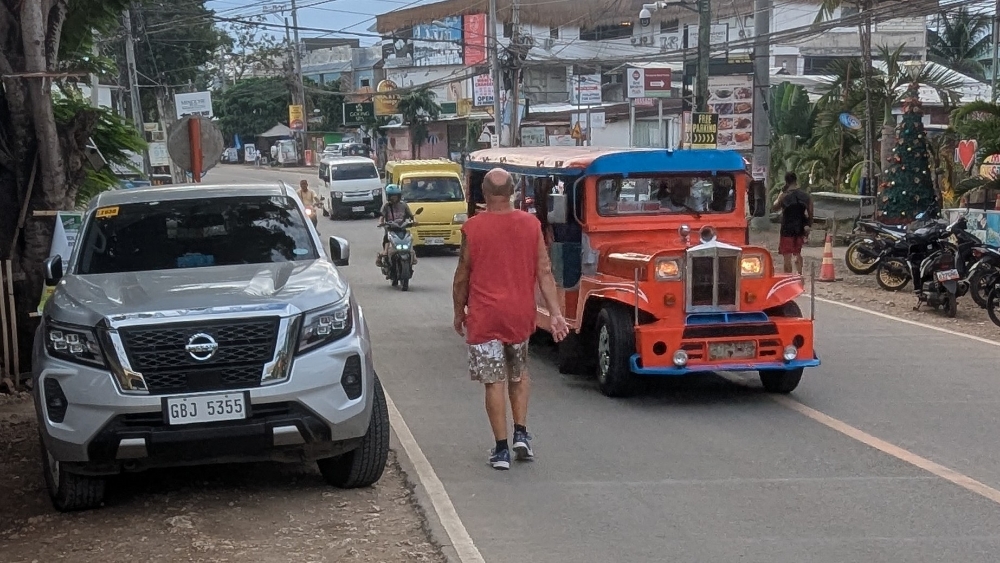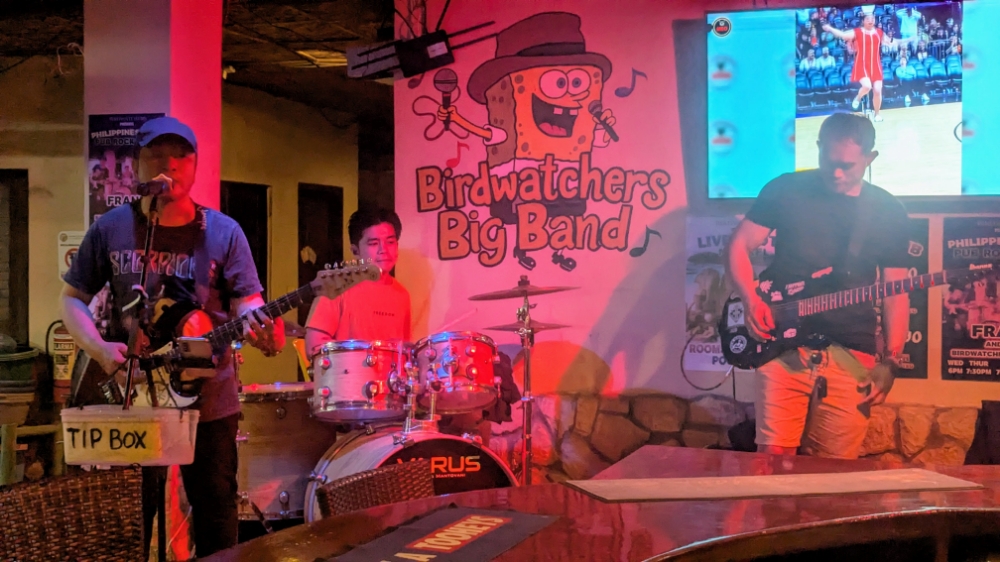
Manila – The Pearl of the Orient
I’ll be honest: I never had a burning desire to visit Manila. But since Manila and Singapore are currently the only nonstop gateways from the U.S. to Southeast Asia, it made practical sense to start here. And after surviving that 17½-hour flight to Singapore once before, a 14-hour direct flight to Manila sounded like a reasonable compromise.
Manila is one of the densest cities in the world. Roughly a quarter of the Philippines’ population—about 28 million people—call the Greater Manila Area home. It’s sprawling, layered, contradictory, and endlessly alive.
I stayed in Makati City, the financial district—glass towers, rooftop bars, upscale malls. Just blocks away is Poblacion, the gritty bohemian nightlife zone where expats, street vendors, tattoo shops, and neon-lit bars all operate in close quarters. It’s the kind of place where everyone has a story, and everyone is watching everyone else.
From my 56th-floor Airbnb, the skyline view was cinematic. But down on the street level, the city reveals its true self—uneven sidewalks, surprise obstacles, motorcycles where sidewalks should be, and traffic that treats crosswalks as suggestions. Every walk is a small adventure.
Yet there was something compelling about it.
There were midnight breakfasts on P. Burgos Street, under neon signs and buzzing electrical lines. San Miguel Pilsens priced for tourists. Conversations with locals and veterans of Manila’s nightlife, trading stories at 2 a.m.
A city that never really sleeps, but never truly rests either.
I didn’t come to Manila to tick off sights.
I came to acclimate—to time zone, weather, and rhythm. Once my pace settled, it was time to move on.

| Borracho y Loco You can call me crazy, but one of my ongoing travel missions is to track down the best tequila and mezcal bars around the world. So far, I’ve had some unexpected wins — standout agave spots in Bangkok and Hoi An — places where you wouldn’t think you’d find a proper pour of espadín, tobalá mezcal, or blanco tequila, yet there they were, served with pride. To my surprise (and delight), I found one right here in Manila — just a few minutes from my Airbnb. A’Toda Madre is a Mexican restaurant and bar with an we that would hold its own in Mexico City, Guadalajara, or Oaxaca. The owner, Windi Tapawan, is a Filipina entrepreneur, traveler, and guide who personally sources many of the bottles herself — which tells you everything you need to know about her dedication. And yes — after flying halfway around the world, my first meal in the Philippines was Mexican food. It was Taco Tuesday, after all. And I am, unapologetically, the Gringo in Paradise.🌮🇲🇽✈️🇵🇭 https://www.facebook.com/atodamadretequila/ |

Panglao, Bohol — Island Life
Panglao was a strategic stop. A 90-minute flight from Manila and a 10-minute tuk-tuk ride put me at Alona Beach, with a convenient ferry to Cebu afterward—no return to Manila required.
Alona has plenty going on: beachfront bars, dive shops, cafés, and a noticeable wave of new development. But the infrastructure hasn’t quite caught up. The main road through town should be walkable—restaurants, bars, and shops all in easy distance—but sidewalks are inconsistent or missing entirely, so an evening stroll can feel more like navigating a living obstacle course. It’s simply a destination in transition: the charm and rough edges share the same stage.

After dark, when the heat finally dropped, I took slow walks along the beachfront path—quiet, open, no traffic. I spent a couple of evenings at the Birdwatcher Bar, an open-air spot run by an Australian expat. On most nights, the Birdwatcher Big Band performs. The owner proudly proclaimed them “the greatest cover band in existence”—a statement he repeated more than once, and with conviction.
Filipino musicians are known for their uncanny ability to mimic vocal styles. There’s a reason the band Journey hired their current lead singer from Manila. That tradition was on full display here, as the band moved from Led Zeppelin to Bob Marley to 70s ballads without hesitation. Add a few San Miguel Pale Lagers, a warm ocean breeze, and a crowd that felt like a mix of travelers and regulars — it made for genuinely enjoyable evenings.
Panglao served its purpose: I slowed down, slept well, and adjusted to the climate.
The Philippines ❤️ — A Familiar Stranger
Today is my last day in the Philippines, and what stays with me most is a sense of familiarity I didn’t expect.
Not just because English is widely spoken, but something deeper — something that reminded me of Mexico, the place I now call home.
For nearly 250 years, the Philippines was governed from Mexico City under the Viceroyalty of New Spain. The Manila–Acapulco Galleon Trade (1565–1815) linked the two regions across the Pacific. Ships carried silk, spices, ivory, lacquerware, and porcelain to Mexico, returning with silver to fund the next voyage.
Filipino sailors were aboard those ships. Many stayed in Mexico and became known as chinos libres (free Asians), leaving cultural traces along the Pacific coast.
The exchange moved both ways. Mexicans traveled to the Philippines, influencing food, language, music, and ritual. Even mezcal carries this history — early distillation methods trace back to Filipino migrants adapting coconut wine techniques to agave.
And the echoes continue today:
Día de Muertos in Mexico
Undas In The Philippines
Both are acts of remembrance — families gathering in cemeteries to honor ancestors, blending Catholic traditions with older indigenous beliefs about death and the afterlife.
It feels like recognizing a cousin you never met.
Now, as I pack for Vietnam, I can’t help but borrow General Douglas MacArthur’s famous words when he was forced to leave these islands during WWII:
“I shall return.”
And I will.
